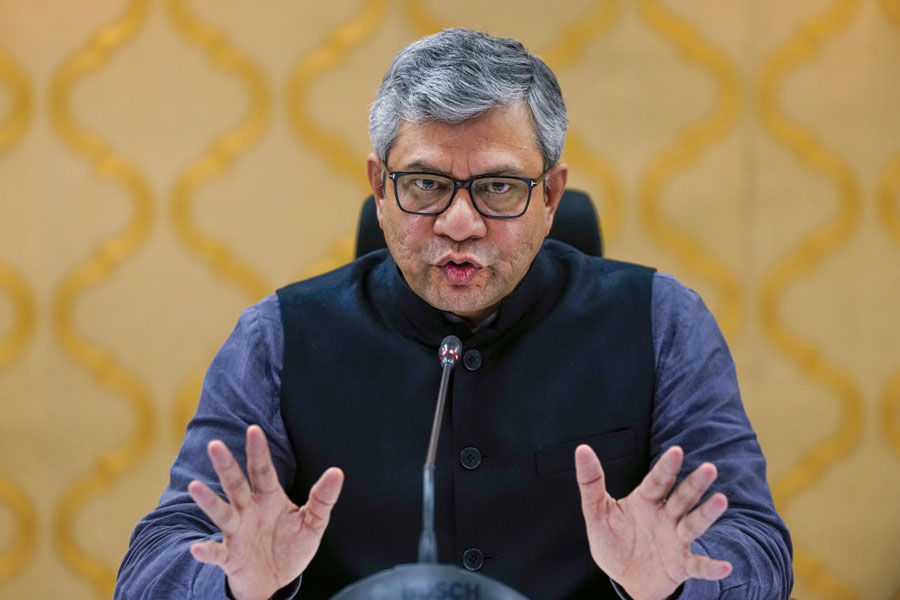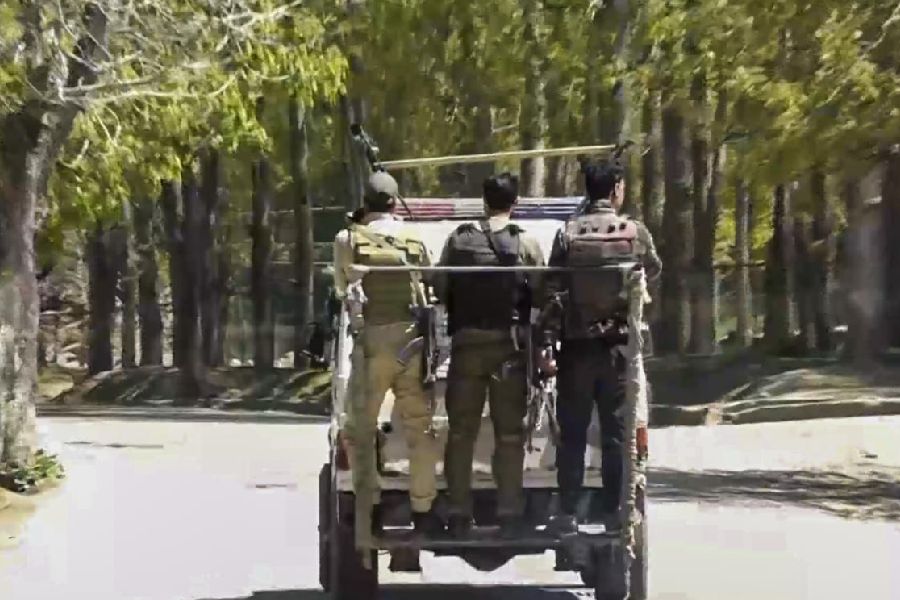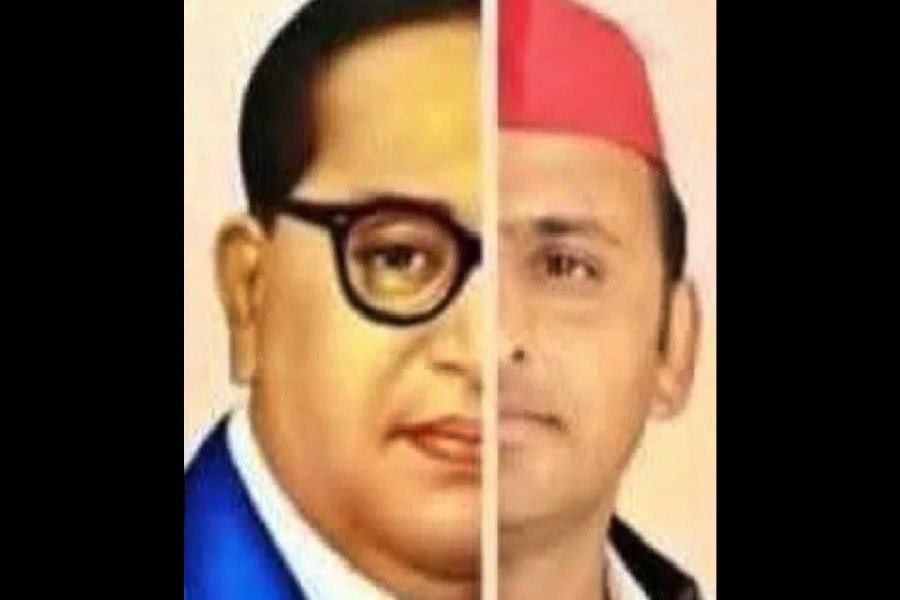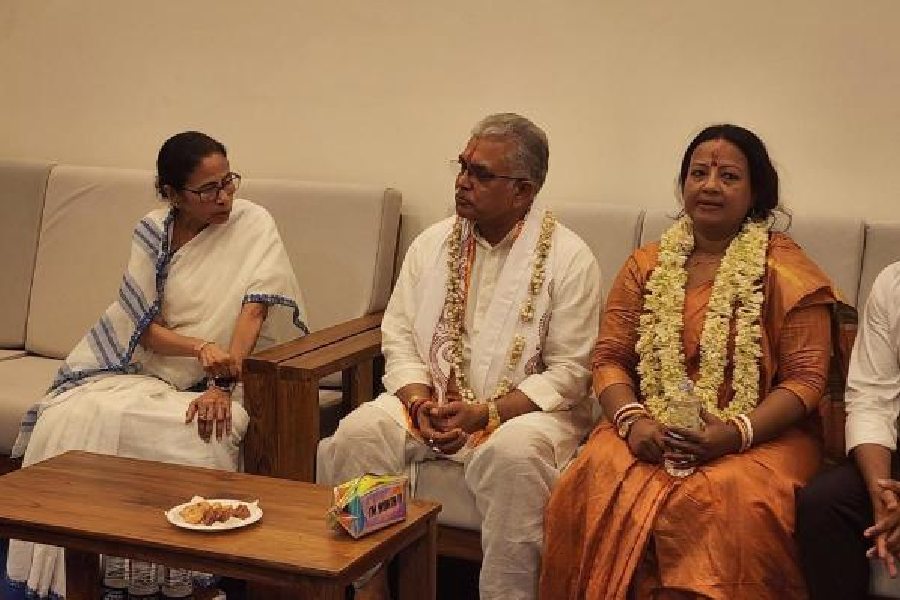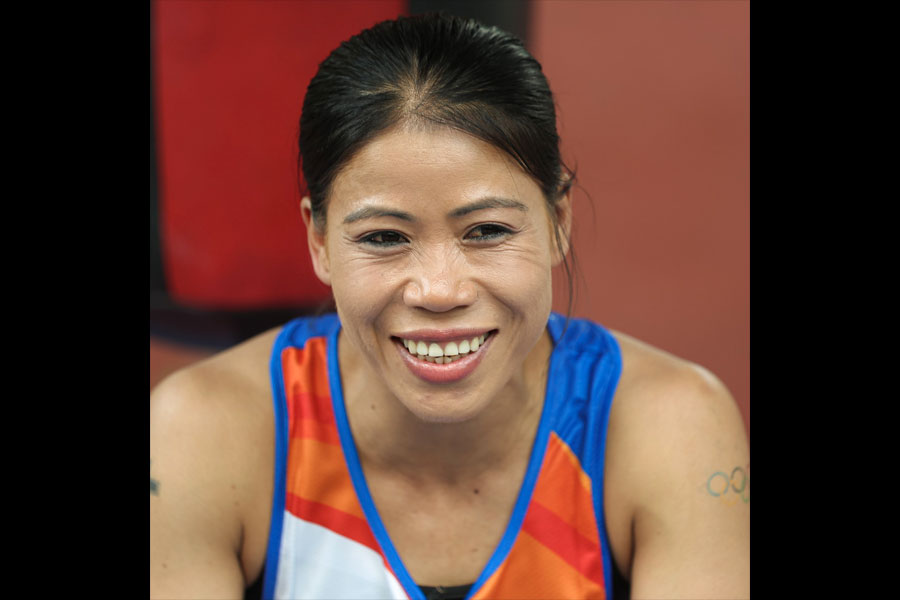 |
| Fleeting drama |
For photographer Nony Singh it was unthinkable that images could lie around in disorganized piles: her interviewer, Sabeena Gadihoke, says that “she has an obsessive desire to make albums”. The first album was given to her in 1949 by a boarding school teacher. It has a hand-painted cover with the title, Glimpses of the Past, elegantly inscribed on it. At the time, Nony was just a teenager, but had been taking photographs from the age of seven: she used her father’s camera to photograph her mother on a family picnic. A few years later, she persuaded her mother to don a shirt, trousers and shower cap and pose as a policeman with a baton in hand. This penchant for the idiosyncratic pose has remained with Nony all her life.
When Nony got married at the age of 22, her father-in-law gifted his Zeiss Ikon camera to her. Her husband, Mahenderpal, owned a Leica and a movie camera — but Nony never used the former. In Nony Singh — The Archivist where Sabeena Gadihoke and Aveek Sen introduce us to a selection of the photographer’s oeuvre, they had much to choose from as her home is clearly awash with images and albums in nooks, book shelves, arms of sofas, cardboard boxes, tin trunks and so on. Nony is equally comfortable as the subject of the camera, and the first half of the book consists of images of her. A number of the self-portraits, too, are taken by her. For Nony, the pose is all important and the album an essential addition to the photographic process. She poses in a swimsuit, in front of an aeroplane, on the branches of a tree, in a river — and of course, with her babies.
These images and many more have been carefully classified and arranged in albums. The older ones have patterned hard covers of roses and other flowers and are bound with silken tassels. Albums become a convenient way of presenting the past through images. The choice of these, of what should be included and those that should be put aside reflect the viewpoint of the owner: as a visual memoir they, no less than a written text, are imbued with subjective emotions. Often, it comprises an “idealized tableaux of domesticity”, concealing as well as putting on display, “haunted by secrets, tragedies and forbidden intimacies that lie beyond their frames” (Gadihoke). At times, Nony’s role as archivist and album enthusiast almost rivals that of her as photographer.
Nony Singh’s eldest daughter, Dayanita, is one of India’s foremost photographers; in some ways, it was ordained that at least one of the image-making mother’s children should follow her. When, in 1997, Gadihoke was making her film about three women photographers, Dayanita, who was one of them, drew attention to her mother’s photographs, pointing to many similarities between those taken by her and those by Nony. There is one taken just as the daughter is leaving to embark on her life at the National Institute of Design.
It is as much about shadows as it is about the subject: the shadow of the roof is angled at the corner of the image. But what strikes one is the shadow of the photographer with camera in hand on the right side of Dayanita who stands, head tilted, left hand on her side and a half smile on her lips. Gadihoke concludes that “[M]other and daughter continue to cast their shadow on each other as image-makers, archivists and collaborators”.
It is, of course, how Nony looked at her world — and, in turn, how Gadihoke and Sen chose to re-present it through this elegant volume — that takes us into the realm of photographic and archiving discourses. Her images have, as Sen comments, “the fleeting essence of the dramatic, the droll, the bizarre and the beautiful”. What else could explain the image of her daughter, Rishma, leaning against a small vitrine with the stuffed, unborn cubs of the man-eating tigress shot by Nony’s father (picture)? The unfortunate cubs look amazingly alive, the reflection of one of them in a mirror at the back of the vitrine is even more disconcerting. Rishma smiles somewhat self-consciously and looks away from the camera. The awkward angle of her legs and her right hand that is tucked behind appear to indicate that she is not really comfortable. Yet, her mother was not one to take ‘no’ for an answer: Nony Singh photographed her four daughters in a range of costumes, roles and poses. Her oldest, Dayanita, became a queen, a Maharashtrian belle, a Kashmiri beauty and Mother Mary. For the photographer, the fancy dress became almost more important than the child wearing it. School buses, taxis and even people had to wait while the mother got just the right position and gesture from her daughters — the most reluctant being Dayanita. In another striking juxtaposition, daughter Nikita looks at the arched arm of a fierce-looking mechanical tiller. It is taken on the farm where her father achieved a world record for wheat production. Behind the little girl are fallow fields. The image is taken at an angle, with the tree line sloping away. None of Nony’s images appear to be serendipitous or ‘accidents’: she clearly had a very definite semiotic message in mind for many. Here, the child appears to applaud a piece of machinery that has helped in her father’s success. Or, it could be that she symbolizes the future of a country that was to reap the benefits of the Green Revolution.
In several instances, Nony Singh limits the viewers’ role as interlocutor through her captions. While, in each of the albums, images are carefully laid out, choreographed by the owner-photographer, personalized captions are written in pencil below many. Some are plainly descriptive such as ‘Ponta Sahib picnic’, ‘Trio in River Ravi’, while others are intriguing: ‘Aren’t u really sophisticated ma’am’? asks one while another says in Urdu, ‘Door, badi door’ (far, oh so far).
In her interview, Gadihoke asked Nony whether her urge to photograph had “something to do with the fear of forgetting”. In partial admission, she replied, “I capture pictures because I feel that this moment will never come back. I have never enjoyed an occasion when I missed something because of the lack of a camera.” Although today Nony has moved from analogue photography to the digital, her suspicion of the latter is a reflection of her generation: “I am afraid of losing things. There is something about digital photographs. Somehow, they seem to be in the air...” For years, Nony Singh had fought a legal battle over property — but finally she gave up, As she said to Sen, if she did not give up, all her daughters would inherit would be “my wilderness of files”. This, of course, is not entirely true, as her daughters are the lucky heirs to an enormous cornucopia of imagery: Nony Singh feels that her albums “are like a vault for my jewellery”. Perhaps due to the cases she was involved in she “used to feel impoverished but now I feel I possess a lot of wealth. My photos have sustained me through the harshness of life”. What better insurance could a talented photographer ask for?





